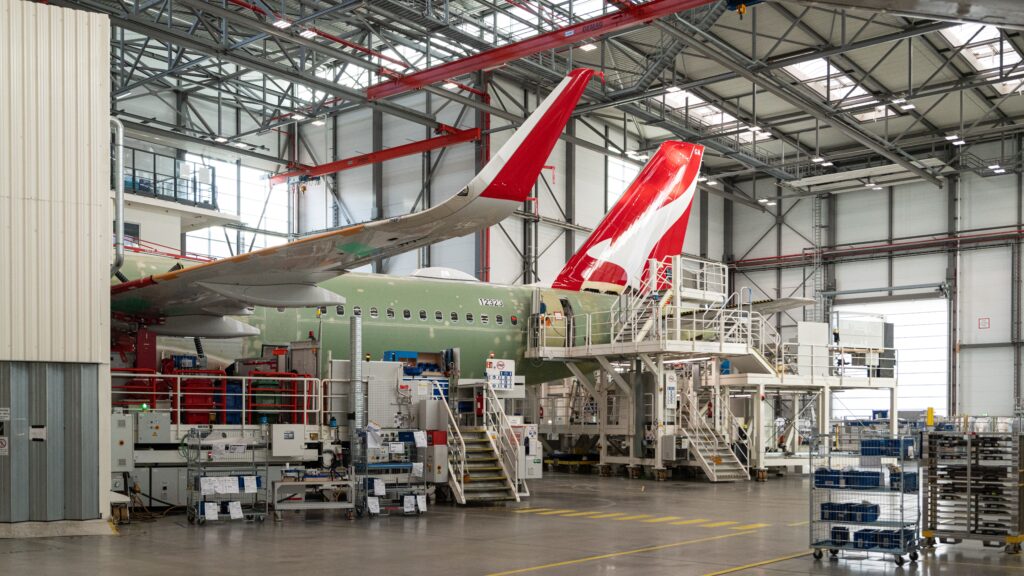
Qantas, Australia’s national carrier, is poised to receive its first Airbus A321XLR next week, marking a significant milestone in its fleet renewal strategy. The introduction of this advanced aircraft is set to transform Qantas’ operational capabilities, initially serving domestic routes before expanding to new international destinations. This move aligns with the airline’s broader ambitions to enhance connectivity and efficiency.
The A321XLR’s arrival is expected to facilitate medium to long-range flights using a narrow-body aircraft, a capability that opens up new possibilities for Qantas. The airline has already hinted at potential direct flights from major Australian cities to Asian destinations such as Melbourne to Manila and Perth to Phuket, signaling a strategic shift in its route network.
A Crucial Component of Fleet Modernization
The introduction of the Airbus A321XLR is a pivotal part of Qantas’ fleet renewal program, aimed at replacing some of its aging Boeing 737s, many of which have been in service for over two decades. According to industry sources, the first A321XLR is scheduled to depart from Hamburg, with its inaugural landing at Qantas’ Hangar 96 in Australia on July 2 at 10:30 AM.
While Qantas has not officially disclosed the initial deployment routes for the new aircraft, it is anticipated that the A321XLR will operate on the airline’s most frequented domestic routes, including Sydney, Melbourne, and Brisbane. As one of the first airlines to operate this aircraft type, following carriers like Iberia, Aer Lingus, and Wizz Air, Qantas is positioning itself at the forefront of aviation innovation.
Enhanced Passenger Experience
The Airbus A321XLR promises a noticeable upgrade in passenger comfort compared to the existing short-haul aircraft in Qantas’ fleet. The aircraft features larger overhead lockers, offering 60% more space than the older 737 jets, accommodating at least one wheeled carry-on bag per passenger.
More Seats, More Comfort
With the A321XLR being approximately five meters longer than the Boeing 737, Qantas can increase seating capacity without sacrificing legroom. The domestic configuration includes 20 business class seats in a 2-by-2 layout across five rows, a significant improvement from the 12 business class seats on the 737. Business class passengers will enjoy a 37-inch seat pitch, with extendable calf and footrests for added comfort.
The economy class is configured in a standard 3-by-3 layout, offering 177 seats, an increase from the 162 seats on the Boeing 737. These seats are slightly wider, maintaining a 30-inch seat pitch. All seats are equipped with USB-A and USB-C power outlets, and business class features additional wireless charging stations. Notably, the domestically configured A321XLR will not have seatback entertainment, encouraging passengers to use their devices via the Qantas app.
Continuing a Legacy with a Unique Registration
In a LinkedIn post, Sarah Collins, Qantas’ Schedule Planner and Network Scheduling, shared insights into the new A321XLR’s registration. The aircraft will bear the registration VH-OGA, a nod to the airline’s retired Boeing 767-300 fleet, which previously used the OGA to OGT registrations. This tradition of recycling registrations is a hallmark of Qantas’ fleet management strategy.
The aircraft, nicknamed ‘Great Ocean Road,’ pays homage to the scenic route in Victoria, Australia, known for its breathtaking coastal views and the iconic Twelve Apostles rock formations. The A321XLR, which previously held the German Airbus registration D-AXXE, completed its first test flight on April 8, 2025, powered by two Pratt & Whitney PW1133G engines.
Qantas eagerly anticipates the aircraft’s arrival next week, marking a new chapter in its strategic development plans. The A321XLR’s introduction is set to enhance Qantas’ operational efficiency and expand its reach, reinforcing its position as a leading player in the aviation industry.





